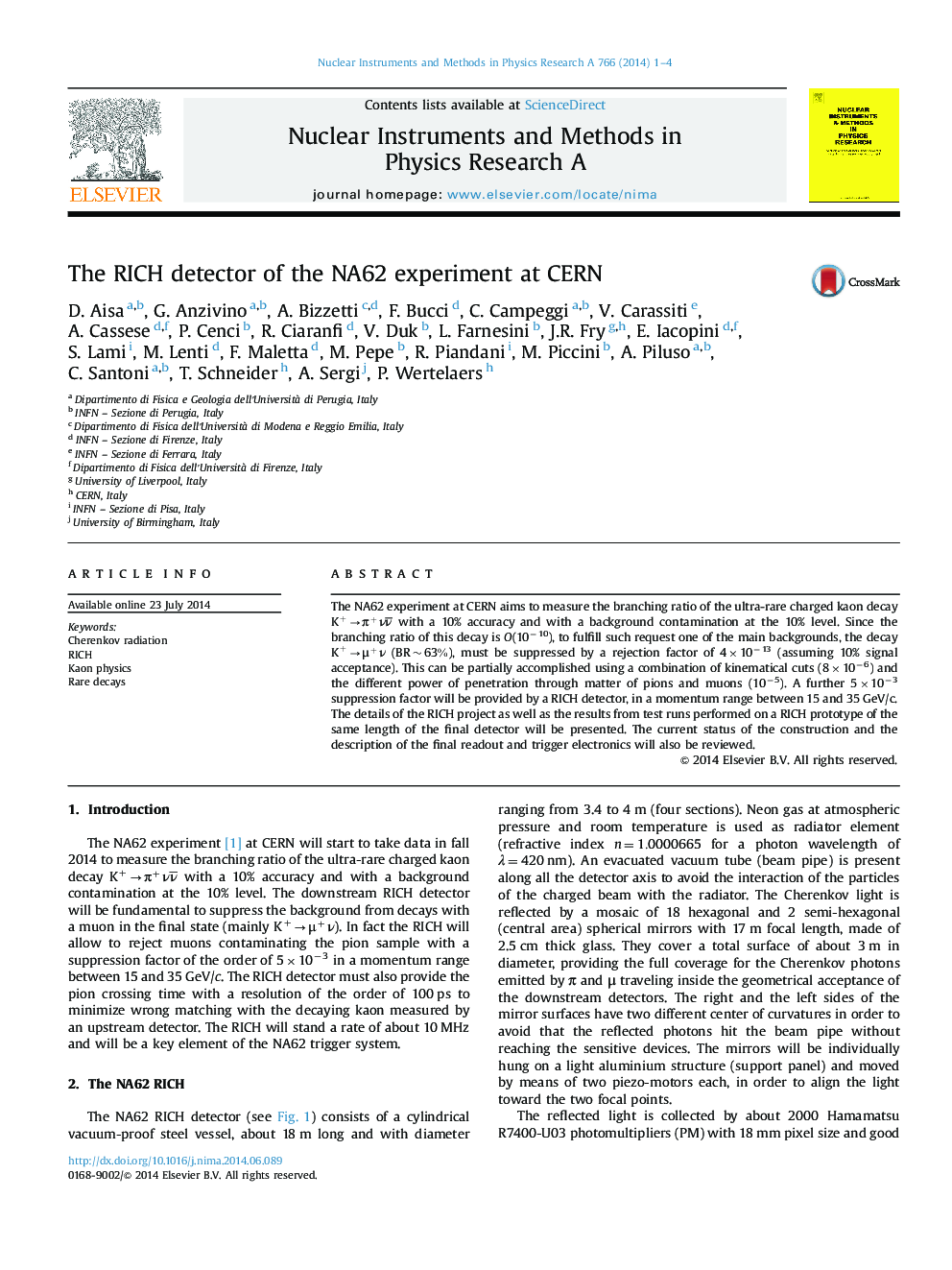| Article ID | Journal | Published Year | Pages | File Type |
|---|---|---|---|---|
| 8175074 | Nuclear Instruments and Methods in Physics Research Section A: Accelerators, Spectrometers, Detectors and Associated Equipment | 2014 | 4 Pages |
Abstract
The NA62 experiment at CERN aims to measure the branching ratio of the ultra-rare charged kaon decay K+âÏ+νν¯ with a 10% accuracy and with a background contamination at the 10% level. Since the branching ratio of this decay is O(10â10), to fulfill such request one of the main backgrounds, the decay K+âμ+ν (BR~63%), must be suppressed by a rejection factor of 4Ã10â13 (assuming 10% signal acceptance). This can be partially accomplished using a combination of kinematical cuts (8Ã10â6) and the different power of penetration through matter of pions and muons (10â5). A further 5Ã10â3 suppression factor will be provided by a RICH detector, in a momentum range between 15 and 35 GeV/c. The details of the RICH project as well as the results from test runs performed on a RICH prototype of the same length of the final detector will be presented. The current status of the construction and the description of the final readout and trigger electronics will also be reviewed.
Related Topics
Physical Sciences and Engineering
Physics and Astronomy
Instrumentation
Authors
D. Aisa, G. Anzivino, A. Bizzetti, F. Bucci, C. Campeggi, V. Carassiti, A. Cassese, P. Cenci, R. Ciaranfi, V. Duk, L. Farnesini, J.R. Fry, E. Iacopini, S. Lami, M. Lenti, F. Maletta, M. Pepe, R. Piandani, P. Wertelaers,
